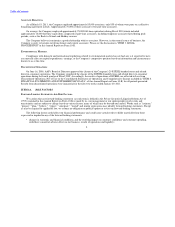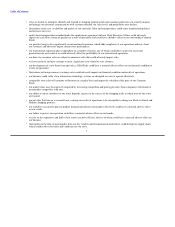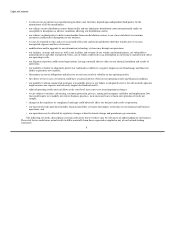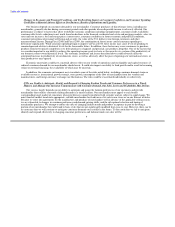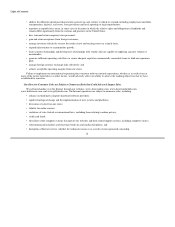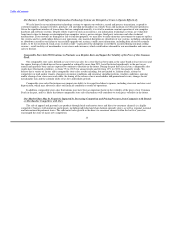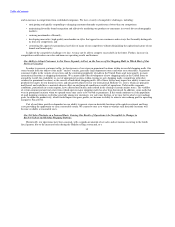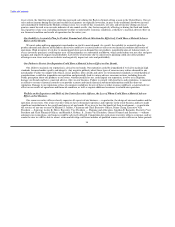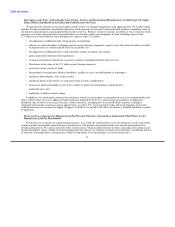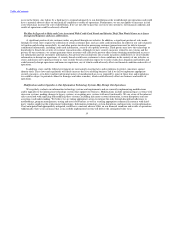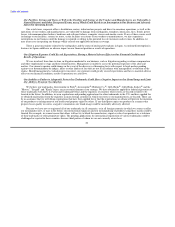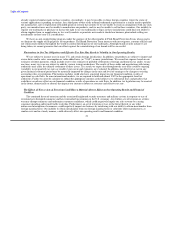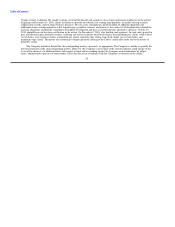Abercrombie & Fitch 2010 Annual Report Download - page 19
Download and view the complete annual report
Please find page 19 of the 2010 Abercrombie & Fitch annual report below. You can navigate through the pages in the report by either clicking on the pages listed below, or by using the keyword search tool below to find specific information within the annual report.
Table of Contents
lesser extent, the third fiscal quarter, reflecting increased sales during the Back-to-School selling season in the United States. Our net
sales and net income during the first and second fiscal quarters are typically lower due, in part, to the traditional slowdown in retail
sales immediately following the Holiday selling season. As a result of this seasonality, net sales and net income during any fiscal
quarter cannot be used as an accurate indicator of our annual results. Any factors negatively affecting us during the third and fourth
fiscal quarters of any year, including inclement weather or unfavorable economic conditions, could have a material adverse effect on
our financial condition and results of operations for the entire year.
Our Inability to Accurately Plan for Product Demand and Allocate Merchandise Effectively Could Have a Material Adverse
Effect on Our Results.
We must order and keep appropriate merchandise in stock to meet demand. As a result, the inability to accurately plan for
product demand and allocate merchandise effectively could have a material adverse effect on our financial condition and results of
operations. High inventory levels due to unanticipated decreases in demand for our products, misidentification of fashion trends, or
excess inventory purchases could require us to sell merchandise at a substantial markdown, which could reduce our net sales and gross
margins and negatively impact our profitability. Low levels of inventory due to conservative planning could also affect product
offerings in our stores and on our websites and negatively impact net sales and profitability.
Our Failure to Protect Our Reputation Could Have a Material Adverse Effect on Our Brands.
Our ability to maintain our reputation is critical to our brands. Our reputation could be jeopardized if we fail to maintain high
standards for merchandise quality and integrity. Any negative publicity about these types of concerns may reduce demand for our
merchandise. Failure to comply with ethical, social, product, labor, health and safety or environmental standards, or related political
considerations, could also jeopardize our reputation and potentially lead to various adverse consumer actions, including boycotts.
Public perception about our products or our stores, whether justified or not, could impair our reputation, involve us in litigation,
damage our brands and have a material adverse effect on our business. Failure to comply with local laws and regulations, to maintain
an effective system of internal controls or to provide accurate and timely financial statement information could also hurt our
reputation. Damage to our reputation or loss of consumer confidence for any of these or other reasons could have a material adverse
effect on our results of operations and financial condition, as well as require additional resources to rebuild our reputation.
We Rely on the Experience and Skills of Our Senior Executive Officers, the Loss of Whom Could Have a Material Adverse
Effect on Our Business.
Our senior executive officers closely supervise all aspects of our business — in particular, the design of our merchandise and the
operation of our stores. Our senior executive officers have substantial experience and expertise in the retail business and have made
significant contributions to the growth and success of our brands. If we were to lose the benefit of their involvement — in particular
the services of any one or more of Michael S. Jeffries, Chairman and Chief Executive Officer; Diane Chang, Executive Vice
President — Sourcing; Leslee K. Herro, Executive Vice President — Planning and Allocation; Jonathan E. Ramsden, Executive Vice
President and Chief Financial Officer; and Ronald A. Robins, Jr., Senior Vice President, General Counsel and Secretary — without
adequate succession plans, our business could be adversely affected. Competition for such senior executive officers is intense, and we
cannot be sure we will be able to attract, retain and develop a sufficient number of qualified senior executive officers in future periods.
16


